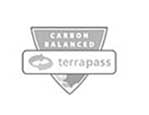There are some misconceptions that cost homeowners tremendous amounts of money each and every year. Here’s how to avoid getting caught:
All Insulation is the Same
The R-value myth has made us all use the same yardstick to compare very different type of insulations. When we do that, some insulation looks extremely expensive compared to other types of insulation.
The same problem arises when comparing a Hyundai with a Lexus. If someone uses the standard of 4 wheels they can’t imagine why anyone would want a Lexus. Then they expect Lexus to have to sell at Hyundai prices. That’s absurd but people do it every day in the insulation industry!
R-value is King
We’ve discussed this before, and it bears repeating. R-value is one way to compare insulations. There is a very important quality that R-value totally neglects. It’s the ability to seal out air.
There are 2 types of energy loss: Conduction and Convection. R-value measures Conduction, how long it takes for heat to get through something. Convection is not calculated in R-value. And guess what destroys the resistance to Conduction in fiberglass and many other insulations?
You guessed it: Convection! That means moisture and air flow significantly lower R-values, the ability to withstand energy loss through Conduction. Yikes!
You Should Go All Closed Cell Foam
Hey, if you can afford a stable of thoroughbreds, do it. However, for most of us, all foam is pretty pricey. And there’s a great reason for that. Just 1-2 inches of closed cell spray foam insulation seals out air and moisture. After that, each additional inch is just adding R-value.
Now here’s the point: you can buy R-value for a lot cheaper than the closed cell spray foam. Use the closed cell spray foam for what it does best: air sealing, resistance to moisture, and a high R-value per inch.
Then use other insulations for what they can do best: provide an r-value at a low price.
All Spray Foam is the Same
It’s extremely easy to be confused by the variety of offerings on the market for spray foam insulation. Often people mistakenly assume all spray foams are the same. They think that open cell foam is the same as closed cell foam. It’s not.
This can be a disaster waiting to happen. If the comparison is done merely on price, the open cell foam is less expensive. There’s a reason for that. Open cell foams are sponge-like, have roughly half the R-value in an inch of closed cell foam, and they absorb and hold moisture, which can lead to mold.
Bigger is Better
This is a classic misunderstanding of how spray foam is priced. It’s a common misconception that the larger spray foam systems are naturally cheaper. They do appear to be so at first glance because the price per board foot (a square foot at 1 inch of cured foam) is lower. That’s because one’s buying a larger quantity of chemicals. The truth is the larger systems are very expensive to get into.
The 2,000 board foot refillable tanks include costs that will make that initial board foot price much less attractive: $5,000 hoses, rental fees and transportation, training and licensing, the separate nitrogen tanks, the additional labor, the risk that waste or misapplication is far more likely, etc.
On top of that, the 55 gallon drums don’t include the $25k-$100k spray foam trailer needed to spray them.
If you’re spraying foam every day for your business, buy the refillable tanks or even a spray foam rig. Even if you’re doing a few projects every week, stick with the portable and disposable kits.
Spray Foam Is Too Expensive
This is a common misconception that comes from the fact we see cheap insulation all the time. Indeed, for most of us, it’s all we ever know. Our homes and buildings are chock full of cheap, lower performance insulation.
It’s simply not fair to say these cheaper insulations lack any redeeming qualities. They have 1 truly remarkable feature: they offer a very good balance of R-value with cost.
While this only addresses Conduction and not Convection, these cheaper forms do a great job at that until there is either moisture or air leaks. Unfortunately, most buildings have both!
That means lower cost alternatives don’t perform as well as other insulations. The cheaper ones cost less on the front end but cost more every month until the real problems are addressed.
It’s easy to see how people get caught off guard by these 6 misconceptions, isn’t it? They’re very common and very misleading. Getting your hands around what’s really going on behind the scenes is critical to getting the results you’re after.
Did you already know about these? If not, did any surprise you? Let me know by emailing me at Help@GuardianEnergyTech.com.









